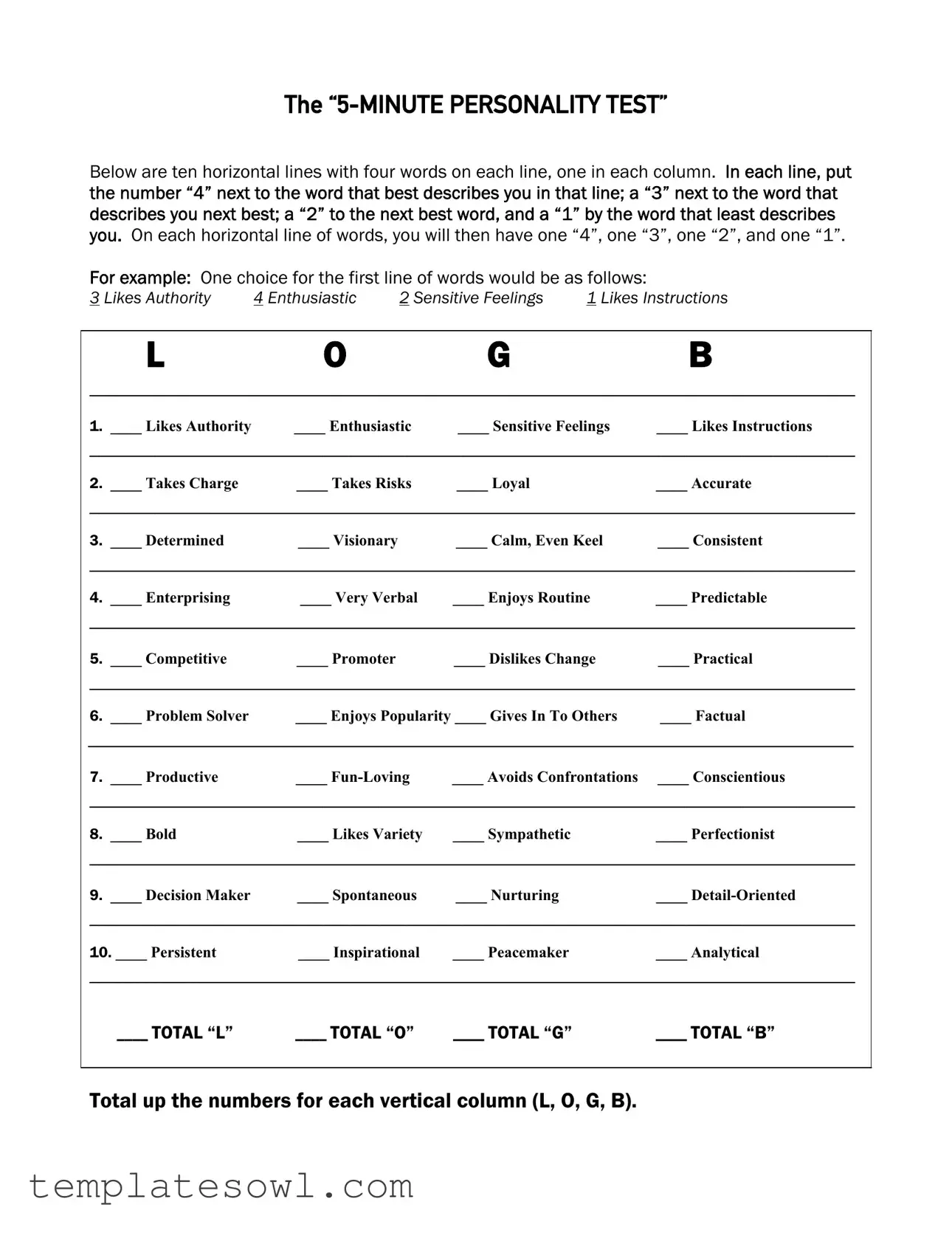What is the 5 Minute Personality Test?
The 5 Minute Personality Test is a quick and engaging survey designed to help individuals identify their dominant and sub-dominant personality types. By assessing your preferences among different descriptive words, you can uncover valuable insights into your natural inclinations, strengths, and potential challenges in various situations.
How do I complete the 5 Minute Personality Test?
To complete the test, you will see ten horizontal lines containing four words on each line. You need to rate each word by placing a “4” next to the word that most describes you, a “3” next to the second-best description, and so on, until you assign a “1” to the least descriptive word. Once you've rated all the words, total your scores for each vertical column to discover your personality type.
What do the letters L, O, G, and B represent?
The letters represent four distinct personality types: L for Lions, O for Otters, G for Golden Retrievers, and B for Beavers. Each type embodies specific traits, strengths, and weaknesses, giving you a clearer understanding of your behavior and reactions in different scenarios.
What can I learn from my results?
Your test results will reveal your dominant and sub-dominant personality types, highlighting how you typically respond in various situations. By understanding these types, you can gain insights into your decision-making processes, communication styles, and interpersonal relationships.
How can this test help me in my personal or professional life?
The insights gained from this personality test can be beneficial in many aspects of life. In professional settings, knowing your personality type can improve teamwork and communication, enhance leadership skills, and promote a better understanding of diverse working styles. In personal relationships, it can aid in conflict resolution and foster stronger bonds through empathy and understanding.
Are the personality types based on scientific research?
While the test is not a scientifically validated instrument, it draws on common personality traits that can be observed in everyday behaviors. The descriptions of each personality type can serve as a helpful framework for understanding general tendencies, but they should not be seen as definitive labels.
Is there a fee to take the 5 Minute Personality Test?
The 5 Minute Personality Test is typically free to take. However, some platforms may offer extended reports or additional features for a fee. Always check the specific website or provider for details regarding pricing.
How accurate are the results of the personality test?
The accuracy of the results depends on how honestly and thoughtfully you respond to the survey. Individual introspection is key to achieving meaningful insights. Keep in mind that while the results can highlight your tendencies, they do not account for the full complexity of human behavior.
Can I take the test more than once?
Yes, you can take the test multiple times. However, it's recommended to allow some time between tests. Consider any significant life changes or personal growth that may influence your responses. This way, you can better track how your personality may evolve over time.

